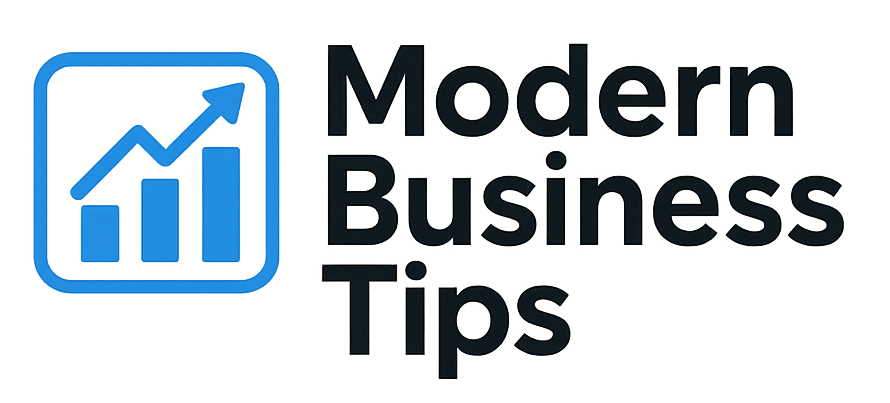Ecommerce, short for electronic commerce, is a fast-growing field. It involves buying and selling goods and services online. As I explore ecommerce, I see it’s more than just transactions. It’s a changing world shaped by new tech and how people shop.
From the 1970s to the 1994 sale of a Sting CD, ecommerce’s journey is fascinating. Today, it’s a huge industry. It’s expected to grow even more, reaching over $7 trillion by 2026.
Key Takeaways
- Ecommerce stands for electronic commerce and involves online buying and selling.
- The first recorded online transaction occurred in 1994.
- It includes various platforms including websites and social media.
- The ecommerce industry is expected to reach over $7 trillion by 2026.
- Consumer behavior has drastically changed due to ecommerce growth.
- Understanding ecommerce is essential for navigating the modern retail landscape.
Understanding the Basics of Ecommerce
Ecommerce is about buying and selling things online. It’s more than just shopping; it includes banking and auctions too. It has grown a lot thanks to new tech and what people want.
Definition of Ecommerce
Ecommerce lets you shop online from anywhere. It’s not just for physical items but also for digital ones like software. It’s more convenient than going to a store.
Brief History of Ecommerce
Ecommerce started in the 1970s with early online shopping. The 1990s saw big changes with Amazon and eBay. These sites changed how we shop online, making ecommerce big in the world economy.
Key Components of Ecommerce
To get ecommerce, you need a few key things. These are:
- Ecommerce platforms: Tools like Shopify for online stores.
- Payment processors: Services like PayPal for safe payments.
- Logistics: Systems for managing stock and orders.
- Data analytics: Tools for understanding sales and customers.
These parts work together to make online shopping smooth for everyone.
Different Types of Ecommerce
Ecommerce covers many models, each showing how buyers and sellers interact. Knowing about B2C, B2B, C2C, and C2B ecommerce helps you better understand the online market.
Business-to-Consumer (B2C)
The B2C model is when businesses sell directly to people. It’s the most common, seen on sites like Amazon and Walmart. People can buy online easily, enjoying deals and a wide range of products.
Business-to-Business (B2B)
B2B deals happen between companies, like wholesalers and suppliers. They often buy in bulk, affecting prices and partnerships. Alibaba is a big example, connecting manufacturers and retailers.
Consumer-to-Consumer (C2C)
The C2C model lets people sell to each other, helped by online platforms. eBay, Etsy, and Craigslist are examples. They’re great for unique items and second-hand goods, encouraging eco-friendly shopping.
Consumer-to-Business (C2B)
In the C2B model, people sell to businesses. Freelancers on Upwork or Fiverr are a good example. This shows how businesses are now using consumer help for different tasks.
| Type of Ecommerce | Definition | Popular Platforms |
|---|---|---|
| B2C | Businesses selling directly to consumers | Amazon, Walmart |
| B2B | Businesses selling to other businesses | Alibaba, ThomasNet |
| C2C | Consumers selling to other consumers | eBay, Craigslist |
| C2B | Consumers selling products/services to businesses | Upwork, Fiverr |
The Growth of Ecommerce
Ecommerce growth is moving fast and catching everyone’s attention. By looking at the numbers, we see a big jump in online sales and more people getting involved. This part talks about the amazing stats behind this growth, how tech is changing ecommerce, and how online stores are reaching more people worldwide.
Statistics and Trends
Recent numbers show ecommerce is growing fast, with sales expected to hit over $6 trillion by 2024. A huge 22% increase in sales on platforms like Amazon shows more people want to shop online. Over 70% of shoppers prefer buying online over in stores.
Impact of Technology
Technology has played a huge role in ecommerce’s growth. Mobile commerce (m-commerce) makes shopping easier and more convenient. New tech like AI and AR are changing how we shop online, giving us personalized experiences and boosting sales.
Global Reach
Ecommerce knows no borders, letting businesses sell to people all over the world. It’s made shopping experiences digital, opening up new ways for retailers to connect with customers globally. With 2.14 billion digital buyers in 2021, ecommerce’s global growth is clear, opening doors to new markets.
Benefits of Ecommerce
Ecommerce has changed how we shop and do business. It offers many benefits for both shoppers and businesses. Let’s look at how it makes shopping better and easier.
Convenience for Consumers
One big benefit of ecommerce is how convenient it is for shoppers. You can buy things online from home, anytime. This makes shopping easy and saves time.
With online shopping, you can see lots of products quickly. You can compare prices and read reviews easily. This helps you make better choices without the hassle of going to a store.
Cost-Effectiveness for Businesses
For businesses, ecommerce is very cost-effective. Online stores don’t need a physical space or many employees. This saves money that can be used for marketing and improving customer service.
Online stores can also be more profitable. They can use digital marketing to reach more people. This helps them make more money and grow their business.
24/7 Availability
Ecommerce is always open, unlike physical stores. This means customers can shop at any time. It makes them happier and can help businesses make more money.
Businesses can sell to people all over the world. This is because online stores are open all the time. It’s a great way to make money and grow your business.
Challenges Facing Ecommerce
Ecommerce has changed the retail world, opening up new chances for businesses. But, there are big challenges to face, like market competition, security worries, and logistics problems. Knowing these challenges is key for any ecommerce business to succeed.
Competition in the Market
The online shopping world is very competitive. This is because it’s easy for new businesses to start. They often sell the same things as big brands. To stand out, businesses need to be different, offer great service, and have new products.
Security Concerns
Security is a big worry for both shoppers and businesses. As more people shop online, cyber threats grow. Keeping customer data safe builds trust. To fight these threats, investing in secure payment systems and data protection is vital.
Logistical Issues
Logistics can make or break an ecommerce business. Fast, affordable shipping is key to happy customers. Delays or unclear shipping can upset customers. To solve these problems, I work on making shipping better and team up with reliable carriers.
| Challenge | Description | Potential Solutions |
|---|---|---|
| Market Competition | High number of competitors selling similar products. | Be different with marketing and service. |
| Security Concerns | Chances of data breaches and cyberattacks. | Secure payment systems and data protection. |
| Logistical Issues | Shipping delays and costs harm customer happiness. | Make shipping better and partner with carriers. |
How to Start an Ecommerce Business
Starting an ecommerce business is an exciting journey. It’s filled with opportunities. The first step is to pick a niche that you’re interested in and meets market demand. This way, you can offer products or services that appeal to a specific audience.
Next, building a well-designed ecommerce website is key. This digital store is where customers can look at what you offer and buy. It’s your main platform for sales.
Selecting a Niche
Choosing a niche is about mixing your passion with market research. Look into industries or products you love, and also check current trends and what people need. Picking the right niche is important for your business’s success.
Building a Website
Creating your ecommerce website needs focus on user experience. A simple layout, easy navigation, and interesting content are important. They help visitors want to stay and explore.
Good product displays and clear descriptions are also key. They help customers make better choices. This makes your site more effective for sales.
Payment Processing
Smooth payment processing is essential for a good customer experience. I make sure to use secure payment gateways for transactions. This builds trust and keeps customers’ financial info safe.
A simple checkout process also helps. It leads to more sales and keeps customers coming back.
Essential Tools for Ecommerce
To succeed in ecommerce, the right tools are key. Using top ecommerce platforms, marketing tools, and inventory systems boosts success. These tools make shopping smooth and improve business efficiency.
Ecommerce Platforms
Choosing the best ecommerce platform is vital. Shopify and WooCommerce are great for easy online store setup. They offer templates, payment options, and analytics.
With the right platform, my business runs well. Customers enjoy a great shopping experience.
Marketing Tools
Good marketing tools are essential for attracting customers and boosting sales. I use Mailchimp for emails, Hootsuite for social media, and Google Analytics for website stats. These tools help me create effective campaigns.
They help me reach more people and sell more. This grows my business.
Inventory Management Systems
Effective inventory management is critical. Tools like TradeGecko or Square help track stock and sales. They automate orders too.
With these systems, I avoid stockouts or overstock. This ensures I meet customer needs on time.
| Tool Type | Examples | Key Features |
|---|---|---|
| Ecommerce Platforms | Shopify, WooCommerce | Customizable templates, payment processing, analytics |
| Marketing Tools | Mailchimp, Hootsuite | Email marketing, social media management, tracking web traffic |
| Inventory Management Systems | TradeGecko, Square | Stock tracking, sales monitoring, order automation |
Marketing Strategies for Ecommerce
Creating effective ecommerce marketing strategies is key to success online. A mix of tactics, like SEO, social media, and email marketing, is important. They help drive sales and keep customers coming back.
Search Engine Optimization (SEO)
SEO boosts your online store’s visibility. Knowing the right keywords and creating quality content are essential. I optimize product descriptions and write blogs that appeal to my audience.
Keeping up with SEO trends is important. Resources like this offer insights into successful strategies.
Social Media Marketing
Social media platforms like Instagram and Facebook are great for connecting with customers. I share user-generated content and run ads to grab attention. This builds a community around my brand.
Creating engaging posts and talking to followers strengthens loyalty. It also encourages repeat purchases.
Email Marketing
Email marketing is vital for building customer relationships. I send personalized messages and offers to keep my audience engaged. A good email strategy targets specific groups with relevant messages.
This approach not only keeps customers but also boosts repeat business.
Payment Options in Ecommerce
Many payment options in ecommerce are key to keeping customers happy and coming back. Easy-to-use and widely accepted choices make shopping better. Businesses that offer flexible payment methods often do better than others.
Credit and Debit Cards
Credit cards are a top choice for online shoppers. Visa, Mastercard, and American Express keep customer info safe. Debit cards let customers pay directly from their accounts. Both are quick and easy to use.
Digital Wallets
Digital wallets like PayPal, Apple Pay, and Google Pay are becoming more popular. They let customers store many payment methods in one spot. Many people like how fast and secure digital wallets make transactions.
Buy Now, Pay Later Services
Buy now pay later services have changed online shopping. They let customers buy now and pay later in small installments. This option is appealing to many, leading to more sales and higher conversion rates.
The Future of Ecommerce
Looking ahead, ecommerce’s future is bright with new technologies. Artificial intelligence, machine learning, and augmented reality will change how we shop online. These tools will make our shopping experiences more personal and fun.
Sustainability is also a big trend. More people want to buy from companies that care about the planet. I’m choosing brands that are eco-friendly, showing a big change in what we want.
Businesses need to keep up with these changes. We want shopping to be easy and tailored to us. Companies that use new tech to meet our needs will do well. They must innovate and care about the environment to succeed in ecommerce’s future.



